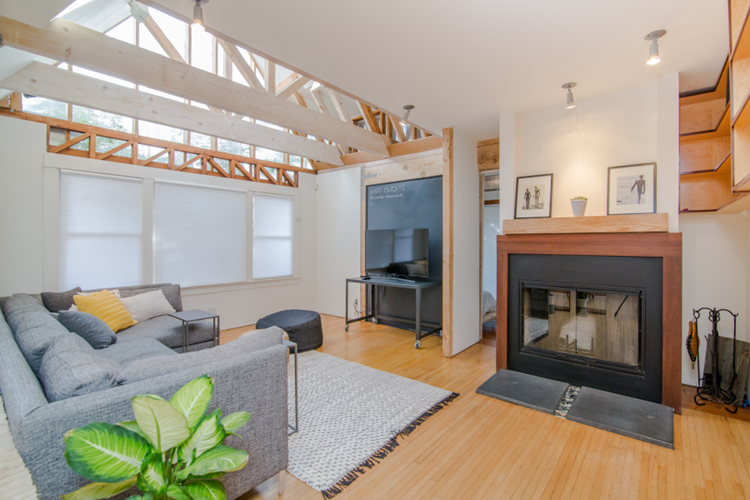The good news is that there is no shortage of real estate investing strategies available to you. Here’s how to get started

When it comes to real estate investing, what is your goal? Is it to get a foothold in real estate investing or is it to build wealth?
Whatever your answer to these questions, there are real estate investing strategies available to you. In other words, there are plenty of options.
But there are also key considerations. That’s where we come in.
In this article, we will outline the 10 best real estate investing strategies. We will also look at some rules that should help you prepare, and how to choose the best strategy that makes you the most money.
Here is everything you need to know.
What are the top 10 best real estate investing strategies?
The good news about real estate investing is that you have options. There are numerous strategies available to you.
The strategy you choose to go with will depend on different factors. What is your risk tolerance? How much control do you want to have over the asset? How much money do you have for a down payment? And there are others.
Whether you are a beginner real estate investor or an expert, there are a variety of real estate investment strategies to choose from. In this section, we will be exploring 10 different strategies:
- Fix and flip
- Real estate wholesaling
- House hacking
- Live in rent
- Live in flip
- BRRRR
- All-cash rental
- Hard money lending
- Syndications/crowdfunding
- Real estate investing trusts (REITs)
Now, let’s break down each of these strategies to help you decide which will work best for you.
1. Fix and flip
Fix and flip is a strategy that means you find properties that need work, do the repairs, and resell them at a top price—for profit. It is a good way to get started in real estate investing. It helps pay the bills and generate cash savings for investments down the road.
While it can be challenging, it can generate lump-sums of cash, if done properly.
2. Real estate wholesaling
Real estate wholesaling essentially means acting as the intermediary between the buyer and the seller of a property. You either collect a fee or collect the difference between what the buyer pays and the seller collects.
Real estate wholesaling usually involves driving for dollars, which means searching neighborhoods for properties you think earn money.
3. Housing hacking
House hacking is just another term for living in a home that also generates income. This can include a duplex, triplex, fourplex, or a home with additional space that you can rent out, such as a spare bedroom, basement, or guest house. By housing hacking, you can lower your total costs.
This investing strategy is a great way to learn the ropes of being a landlord while living at your rental. This creates an opportunity to move out of the home and transition the property to a long-term rental.
4. Live-in rent
This means simply living in a home that will become a rental eventually. In other words, the property works as your home and an eventual rental property. However, you do not rent the property while you are living there, which differentiates it from house hacking.
5. Live-in flip
Live in flip means buying and moving into a home, fixing it up, and waiting a few years or more before reselling it for a profit.
According to the IRS rules, you can avoid taxes on the profit up to $250,000 for one person. If you live in flip as a couple, you can avoid taxes on the profit up to $500,000.
6. BRRRR
BRRRR means buy-remodel-rent-refinance-repeat. If done right, BRRRR is a great way to build a rental portfolio without spending all your capital at the beginning of your investment career.
With this strategy, you find a fixer-upper that you can purchase under full value. You then use short-term financing to purchase the property. After it’s fixed up, you refinance with a long-term mortgage.
7. All-cash rental
The all-cash rental plan snowballs rental income for growth. However, rather than using a mortgage, you save up money and purchase a rental property—minus the debt.
If you are in a high-priced market, it may be challenging to get started with all-cash investing. However, in areas that are not high priced, this is a great option.
8. Hard money lending
Using this strategy, you make short-term loans to investors who purchase fix-and-flip homes or rentals. Typically, the loan would involve high-interest rates and lower loan-to-value (LTV) ratios.
While hard money lending can be incredibly profitable, it can also come with risks. For instance, if you have to take the home back at foreclosure, you need to ensure that you are protected.
9. Syndications/crowdfunding
This means pooling your funds with other investors to purchase real estate. It is a way to invest in any of the other strategies we already mentioned but avoid putting the deals together yourself. In other words, you invest with general partners or syndicators that secure and manage deals for you.
Crowdfunding is a newer form of syndication investing where investment opportunities are marketed through online platforms.
10. Real estate investing trusts (REITs)
REITs are like mutual funds. But rather than enabling you to own a piece of many bonds or stocks, REITs allow you to own a piece of many commercial properties that generate income. This strategy, unlike most other investment strategies, is a truly passive real estate investment when you buy it.
Get to know the best REITs to invest in here.

What is the 5 rule in real estate investing?
The 5 rule in real estate investing means the overall cost of buying a property should not exceed five times the property’s anticipated annual rental revenue. Don’t forget to include any compulsory renovations or repairs in that initial purchase price.
The 5 rule is a widely accepted method when evaluating the economic feasibility of a real estate investment. Real estate investors usually look to the 5 rule to determine the potential monetary gains of property investment.
Let’s look at an example. Let’s say you invest in a property that has the potential to generate $30,000 in annual rental income. Keeping renovations or repairs in mind, the best buying price for that property should not exceed $150,000. We arrive at that figure by simply multiplying the $30,000 annual rental income by five.
Keep in mind that the 5 rule is meant to serve as a guide rather than a hard and fast rule. You will want to account for location, prospects for appreciation, and market trends. However, using the 5 rule can help you avoid needless overspending. It guarantees sufficient cashflow to counterbalance standard expenses like mortgage payments and insurance, among others.
What is the 1% rule in real estate investing?
The 1% rule in real estate investing looks at the price of a property versus the gross income it will generate. To follow the 1% rule, the monthly rent must be equal to or no less than 1% of the buying price.
To calculate the 1% rule, you just multiply the purchase price of the investment property by 1% (or 0.01). If you want to make it even easier, just move the comma of the purchase price of the property two spaces to the left. The result from either method should be the minimum amount that you charge in rent each month.
If the investment property needs repairs, you should add those to the purchase price first and then multiply that figure by 1%.
As an example, let’s use a property with a purchase price of $150,000. To follow the 1% rule in the scenario, you would use the following equation to determine the minimum amount you should charge in monthly rent:
$150,000 x 0.01 = $1,500/month
If, however, you need to spend about $10,000 on repairs, you would add that to the cost to get a figure of $160,000. To follow the 1% rule, you should multiply that figure by 0.01 or move the comma two spaces to the left to get a monthly rent of $1,600.
What real estate strategy makes the most money?
The real estate strategy that makes the most money is likely to be an investment property (or properties). One way to earn money in this way is to purchase a property and rent it out to long-term tenants. Another way is to buy a multi-unit property or small apartment building.
With investment properties, there is no shortage of options.
Other ways to earn income from investment properties include purchasing a vacation rental or property that you intend to rent out short term.
Yet another way is to purchase commercial property or any property type that is not residential real estate. This could include an office building or retail space. Leasing these out to tenants is a great way to generate rental income.
Keep these real estate investing strategies in mind
The good news about real estate investing strategies is that there is no shortage of options. Some strategies are better for investors who are just starting out. Others are great for building wealth. And then there are debt strategies that can put you into a profitable, and usually passive, role.
Regardless of your level of expertise, or your financial situation and goals, there should be a real estate investing strategy for you—if you know where to look.
To find out more about real estate investing strategies, get in touch with one of the mortgage professionals we highlight in our Best in Mortgage section. Here you will find the top-performing mortgage professionals across the USA.
Did you find these real estate investing strategies useful? Let us know in the comment section below.



